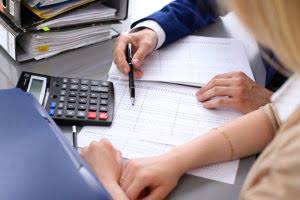What is the Accounting Formula: Assets, Liabilities & Equity
What is the Accounting Formula: Assets, Liabilities & Equity

Additionally, analysts can see how revenue and expenses change over time, and the effect of those changes on a business’s assets and liabilities. Current assets include things like cash and cash equivalents, accounts receivable, and stock inventory. Current liabilities are financial obligations your business owes to another party— things like loans, accounts payable, and taxes. Valid financial transactions always result in a balanced accounting equation which is the fundamental characteristic of double entry accounting (i.e., every debit has a corresponding credit).
Do you already work with a financial advisor?
The accounting equation relies on a double-entry accounting system. In this system, every transaction affects at least two accounts. For example, if a company buys a $1,000 piece of equipment on credit, that $1,000 is an increase in liabilities (the company must pay it back) but also an increase in assets. In double-entry accounting or bookkeeping, total debits on the left side must equal total credits on the right side. That’s the case for each business transaction and journal entry.
What Is Shareholders’ Equity in the Accounting Equation?
An asset is a resource that can provide current or future economic benefit to the organization who owns or controls the asset. Assets are reported on a company’s balance sheet and comprises various asset types such as intangible assets, financial assets, fixed assets and current assets. Because the Alphabet, Inc. calculation shows that the basic accounting equation is in balance, it’s correct. A screenshot of Alphabet Inc Consolidated Balance Sheets from its 10-K annual report filing with the SEC for the year ended December 31, 2021, follows. As our example, we compute the accounting equation from the company’s balance sheet as of December 31, 2021.
- Under the double-entry accounting system, each recorded financial transaction results in adjustments to a minimum of two different accounts.
- All transactions are recorded by the accounting system and used to produce an income statement, balance sheet and cash flow statement.
- This transaction would reduce cash by $9,500 and accounts payable by $10,000.
- So, as long as you account for everything correctly, the accounting equation will always balance no matter how many transactions are involved.
- Journal entries often use the language of debits (DR) and credits (CR).
- Before explaining what this means and why the accounting equation should always balance, let’s review the meaning of the terms assets, liabilities, and owners’ equity.
- When the total assets of a business increase, then its total liabilities or owner’s equity also increase.
How Does the Accounting Equation Differ from the Working Capital Formula?

The articles and research support materials available on this site are educational and are not intended to be investment or tax advice. All such information is provided solely for convenience purposes only and all users thereof should be guided accordingly. 11 Financial is a registered investment adviser located in Lufkin, Texas. 11 Financial may fundamental accounting equation only transact business in those states in which it is registered, or qualifies for an exemption or exclusion from registration requirements. 11 Financial’s website is limited to the dissemination of general information pertaining to its advisory services, together with access to additional investment-related information, publications, and links.
They were acquired by borrowing money from lenders, receiving cash from owners and shareholders or offering goods or services. Additionally, you can use your cover letter to detail other experiences you have with the accounting equation. For example, you can talk about a time you balanced the books for a friend or family member’s small business.

What are assets?
They prove that the financial statements balance and the double-entry accounting system works. The company’s assets are equal to the sum of its liabilities and equity. Accounting equation describes that the total value of assets of a business entity is always equal to its liabilities plus owner’s equity. This equation is the foundation of modern double entry system of accounting being used by small proprietors to large multinational corporations. Other names used for this equation are balance sheet equation and fundamental or basic accounting equation. The accounting equation represents a fundamental principle of accounting that states that a company’s total assets are equal to the sum of its liabilities and equity.
The future of finance is here. Is your business prepared?

It forms the basis of double-entry accounting, where every transaction results in a dual effect, ensuring balance sheet accuracy. The accounting equation is a fundamental part of the balance sheet and one of the basic principles of financial accounting. The balance sheet is one of the three fundamental statements, alongside the income statement and the cash flow statement. The balance sheet shows the company’s total assets and how the assets are financed. It may also be called the statement of net worth or a statement of financial position.
Profit margin equation.

And while these equations seem pretty straightforward on paper, they can get a bit more complicated in practice. Total liabilities include all of the costs your business must pay to outside parties. Total equity is the amount of the money you as the owner have invested in the business. The breakeven point is the point at which the total cost to run your business and the revenue it generates are equal. In other words, there is no loss or gain for your small business because it’s not earning profits, but it’s not losing money either. Here we can see the list of all assets that have been reported on Hershey company balance sheet for 2023.